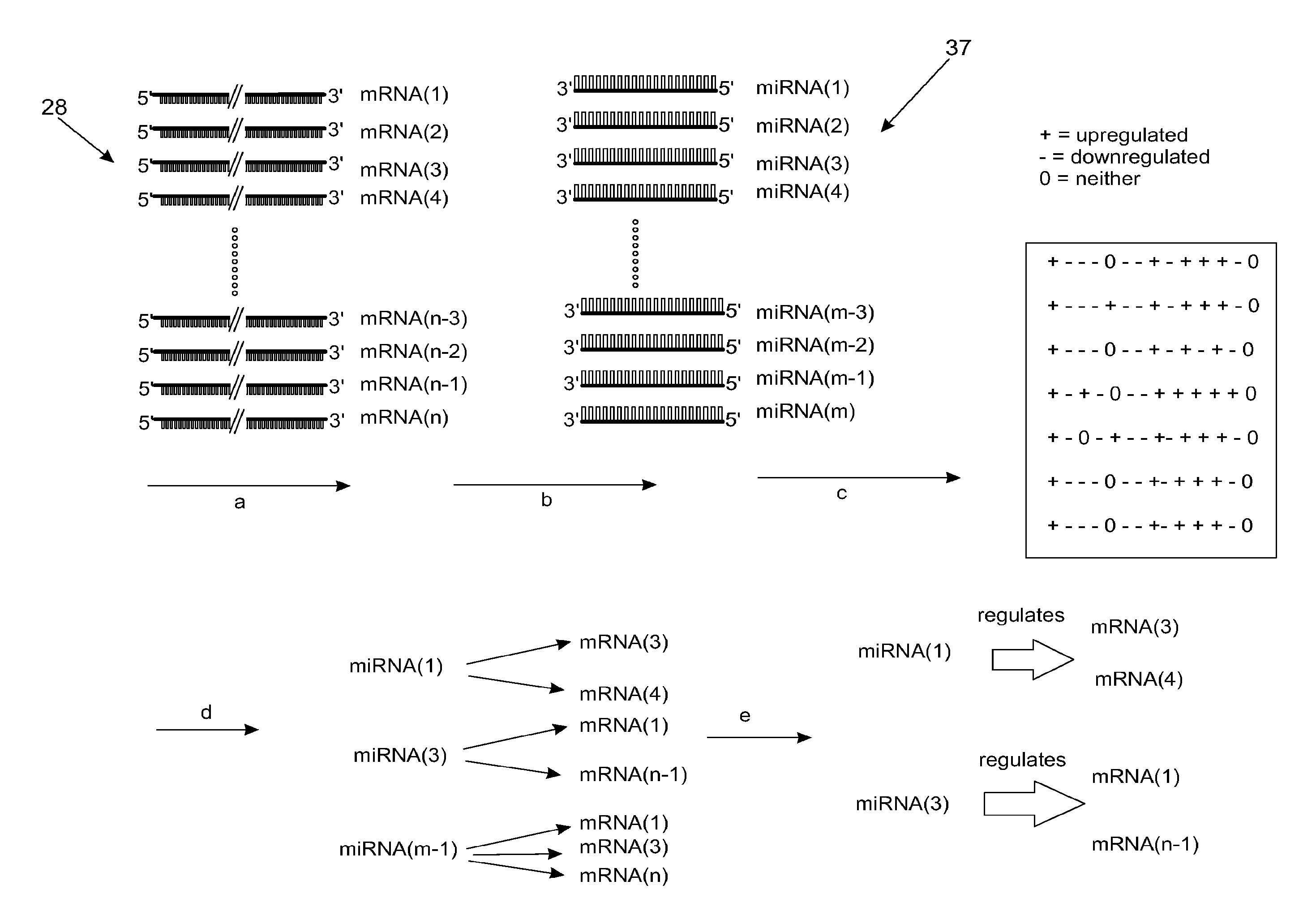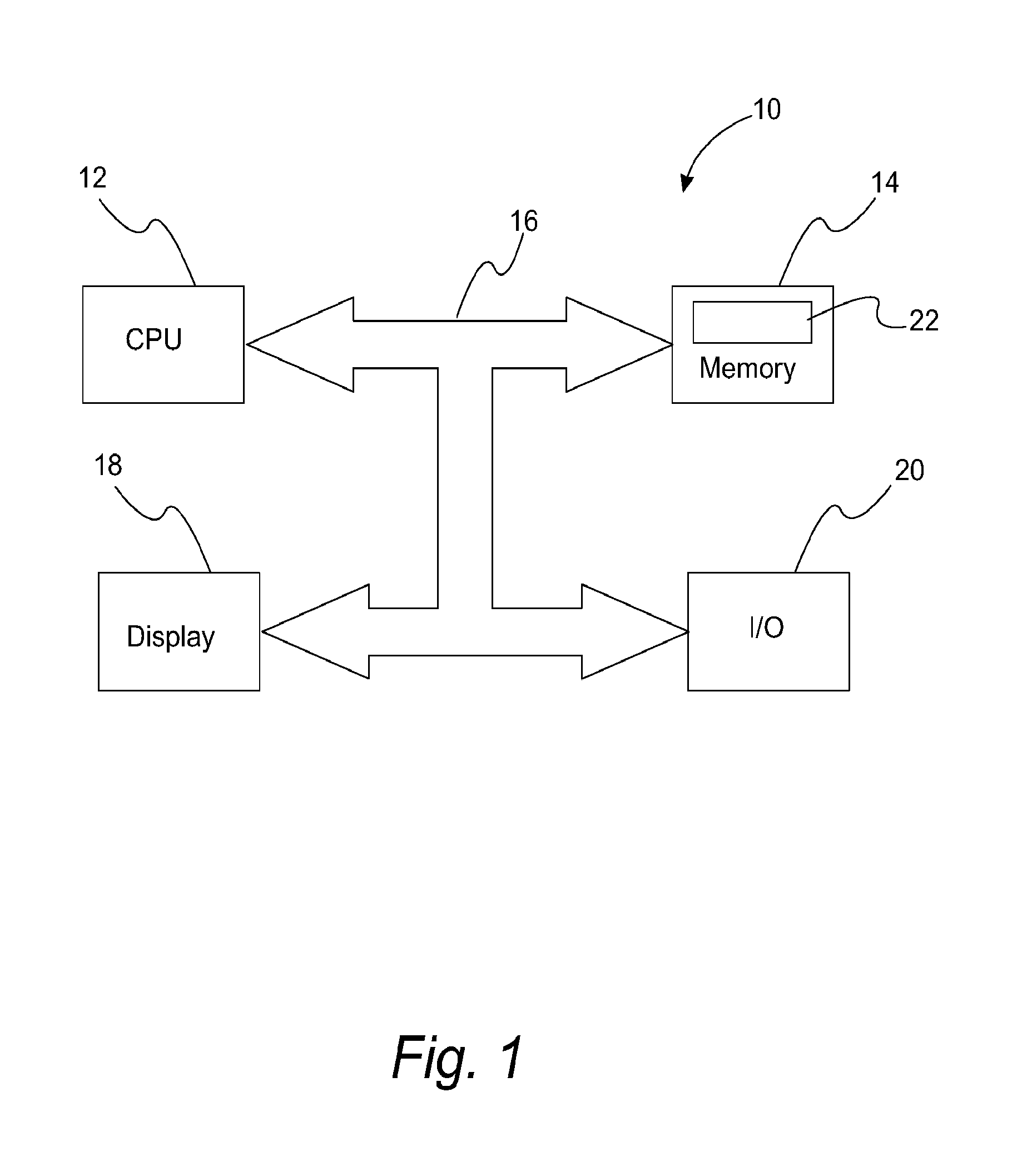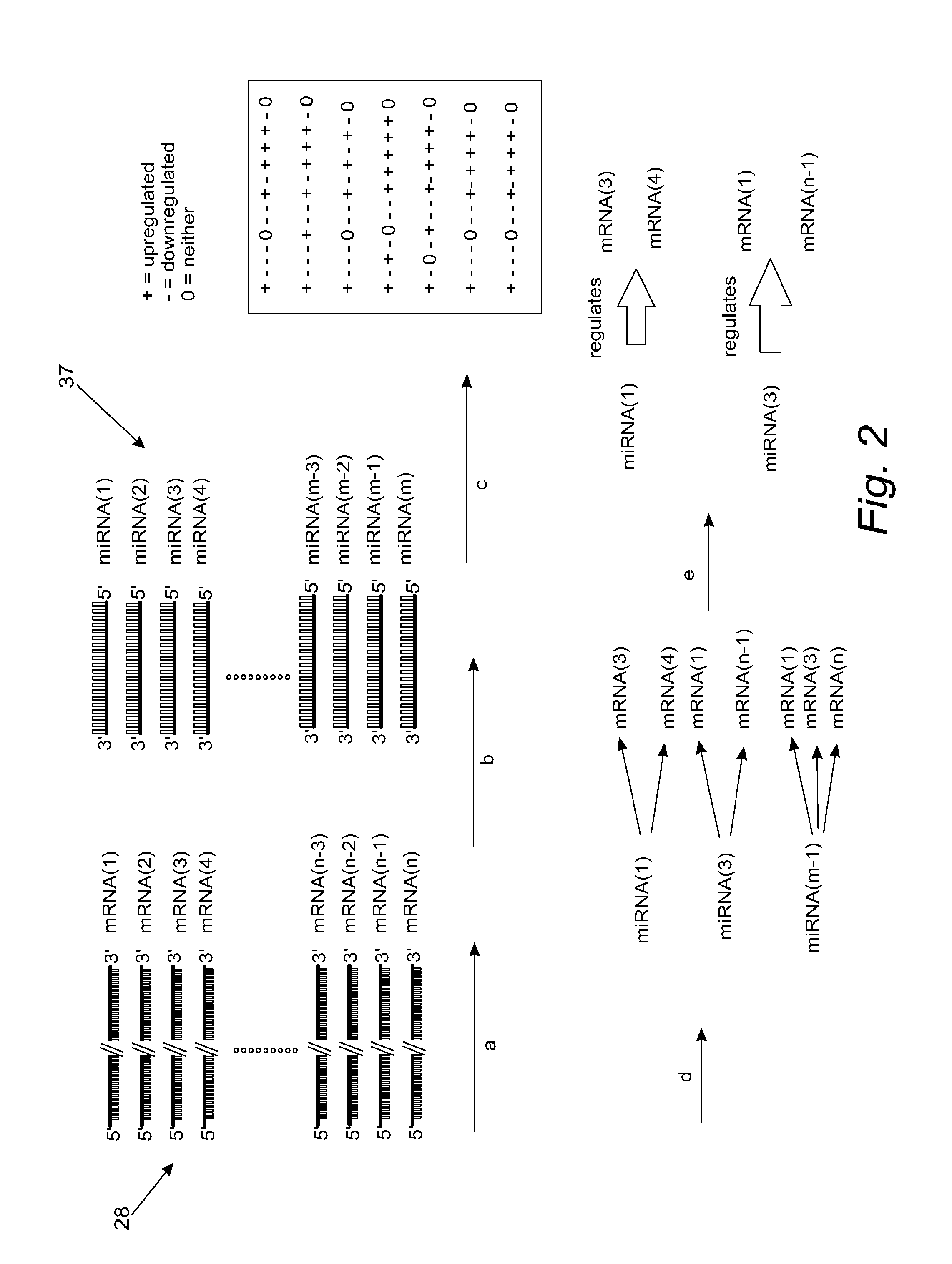Mirfilter: efficient noise reduction method to identify mirna and target gene networks from genome-wide expression data
a genome-wide expression and noise reduction technology, applied in the field ofmirfilter, can solve the problems of identifying disease-relevant pathways using large genome-wide datasets, and little progress has been made towards combining multiple platform datasets
- Summary
- Abstract
- Description
- Claims
- Application Information
AI Technical Summary
Benefits of technology
Problems solved by technology
Method used
Image
Examples
example 1
[0030]The article, New class of microRNA targets containing simultaneous 5′-UTR and 3′-UTR interaction, I. Lee et al., Genome Research, 19:1175-1183 (2008), identifies motifs in 5′ UTRs as potential miRNA interaction sites. The entire disclosure of this article is hereby incorporated by reference. Extending this finding, we prepared miRNAs and their target lists containing both 5′ and 3′ UTR interaction sites, without considering conservation information, and used them to create regulation matrix R. The mean number of target genes predicted in this way is 92, using 722 miRNAs from miRBase v.10.0, nine miRNAs being without targets (hsa-miR-149* has the maximum number of predicted targets, 762 (689 for hsa-miR-940 among non-star named miRNAs). Even though we calculated targets using RefSeq database sequences for mRNA, we will report using gene symbols for ease of comparison. Multiple transcripts for a single gene symbol will thus not be considered in this report. Genes identified as m...
example 2
[0034]For our next test of MirFilter, we used expression patterns of schizophrenia (SZ). Unlike Dmd disorder, the pathology of SZ remains unclear, reflecting complex genetic factors. A genome-wide miRNA profile from brain tissue of individuals with SZ was recently published, reporting 16 differently expressed miRNAs compared to controls D. O. Perkins et al., Genome Biol 8, R27 (2007)). Among these, only one miRNA, miR-106b, was upregulated in the microarray data, while the downregulated miR-7 in the microarray data was found to be upregulated in the RT-PCR data. We used −1 for these two miRNAs and +1 for the other 15 miRNAs (corresponding to our vector annotation) in Δi. As for ΔM, we used Hakak et al.'s gene list in their Table 1 Y. Hakak et al., Proc Natl Acad Sci U S A 98, 4746 (Apr. 10, 2001). 70 genes were +1 and 17 genes −1. These datasets from two different groups used similar brain regions (prefrontal cortex) with sample sizes totaling 36 (miRNA) and 24 (gene chip), includin...
example 3
[0037]The National Cancer Institute provides extensive data on the 60 human cancer cell lines derived from diverse tissues including brain, blood, breast, colon, kidney, lung, ovary, prostate through CellMiner database (http: / / discover.nci.nih.gov / cellminer / loadDownload.do). Among them, 10 cell lines are classified as metastatic cell lines. We downloaded expression data of mRNA, protein, and miRNA of all 60 cell lines and applied mirFilter process.[0038]1) Metastatic signature from NCI 60 cell line data
[0039]Among the 10 metastatic cell lines, we used 9 of them (excluding LOXIMVI cell line due to its non-metastatic behaviors reported by several groups) for metastatic expression pattern signature and the rest 50 cancer cell lines for non-metastatic expression pattern signature. The expression data of these two groups were compared to identify significantly up- and down-regulated mRNAs, miRNAs, and proteins in the metastatic cancer lines.[0040]a. miRNA and mRNA expression comparison
[0...
PUM
 Login to view more
Login to view more Abstract
Description
Claims
Application Information
 Login to view more
Login to view more - R&D Engineer
- R&D Manager
- IP Professional
- Industry Leading Data Capabilities
- Powerful AI technology
- Patent DNA Extraction
Browse by: Latest US Patents, China's latest patents, Technical Efficacy Thesaurus, Application Domain, Technology Topic.
© 2024 PatSnap. All rights reserved.Legal|Privacy policy|Modern Slavery Act Transparency Statement|Sitemap



